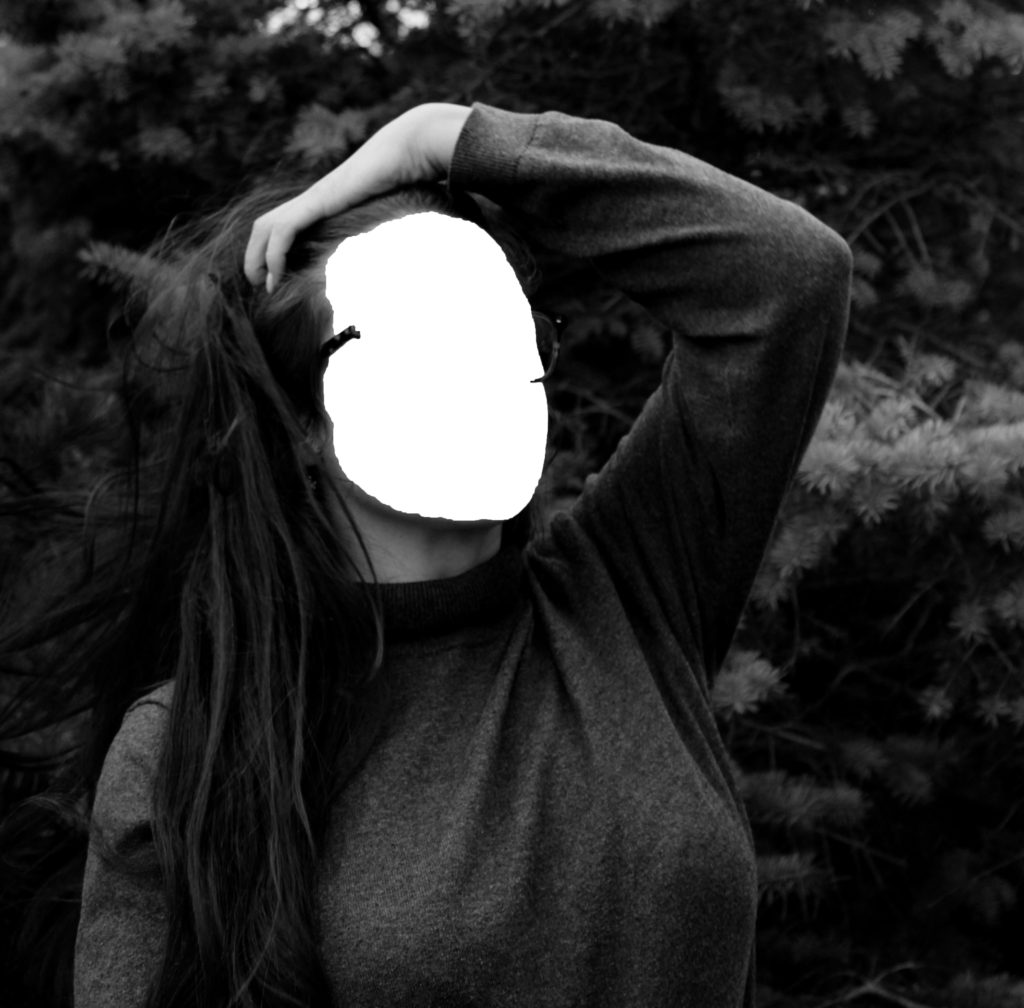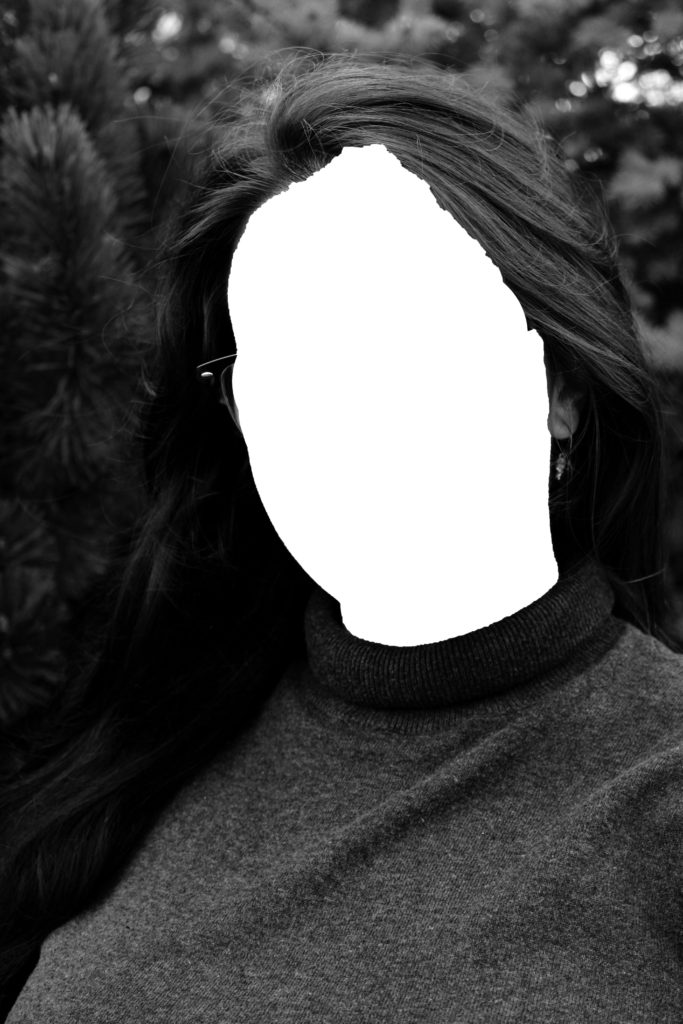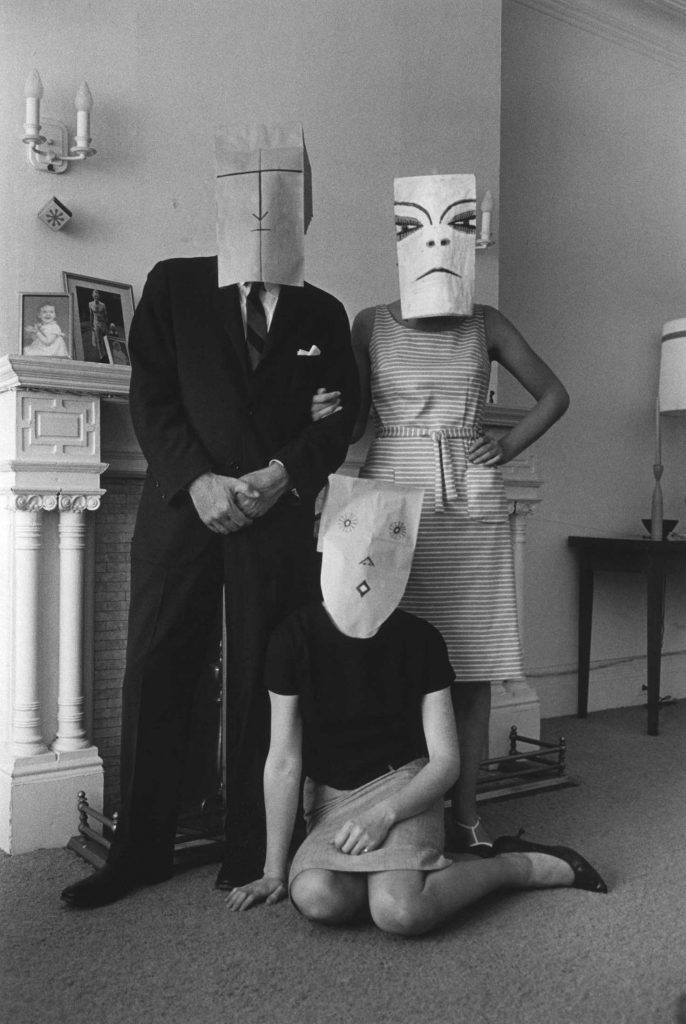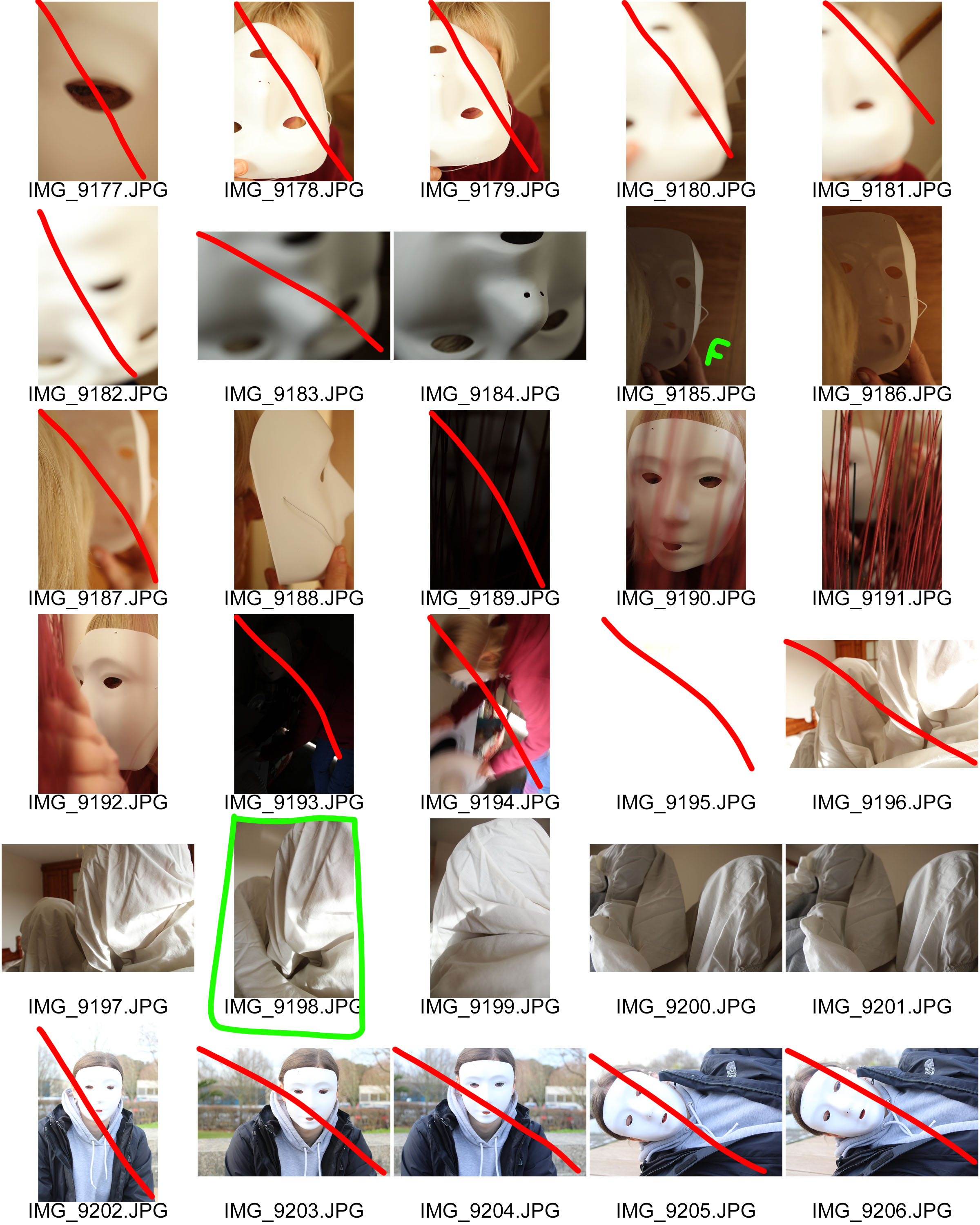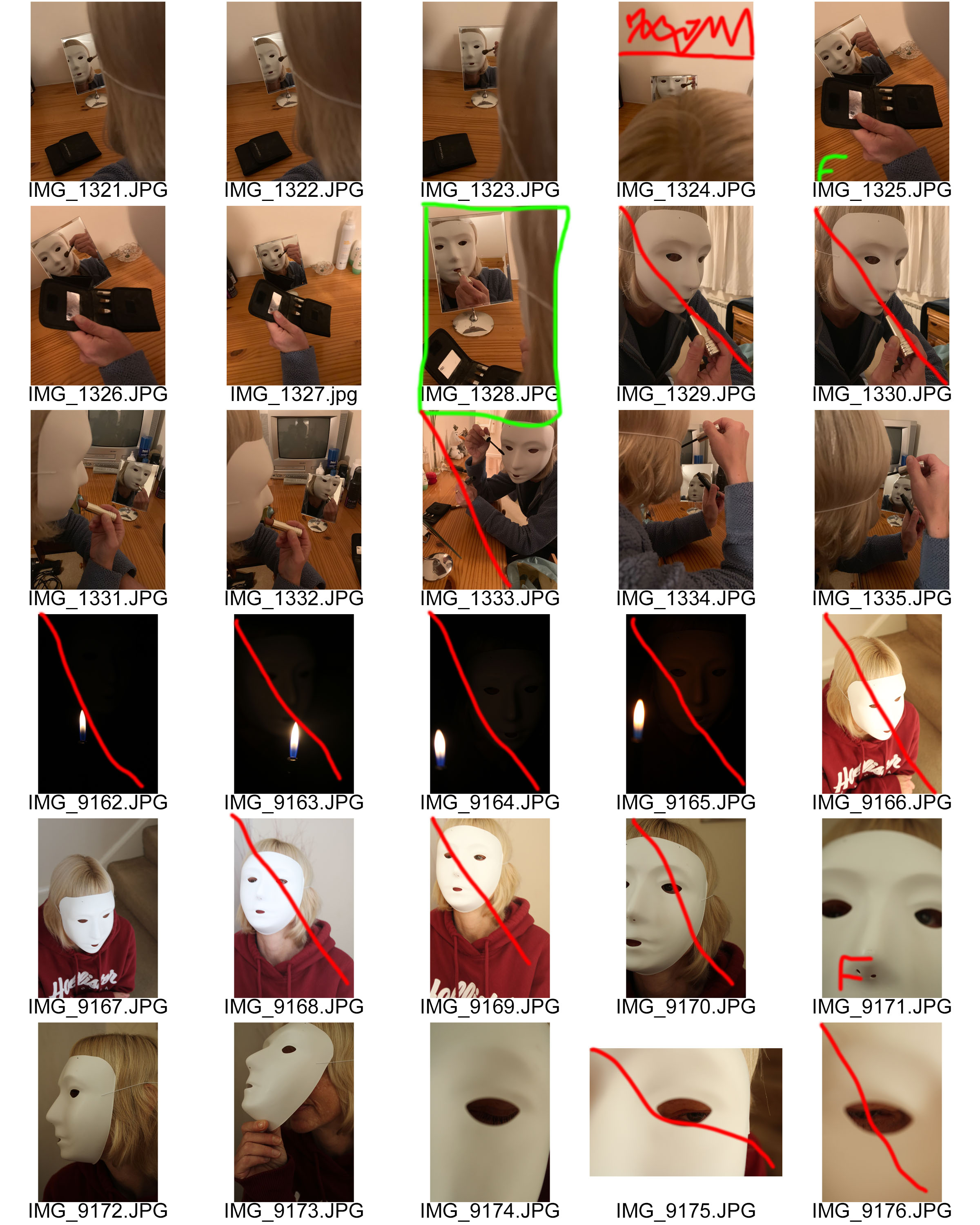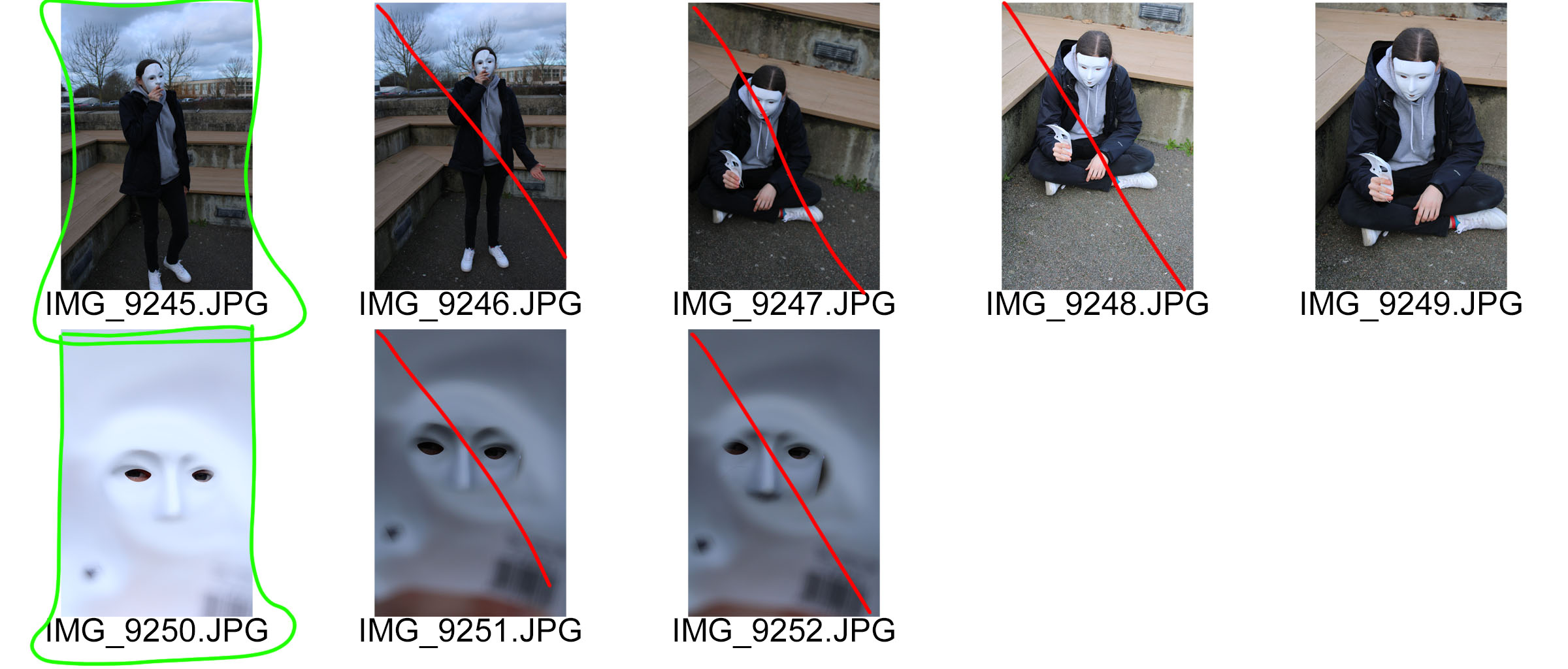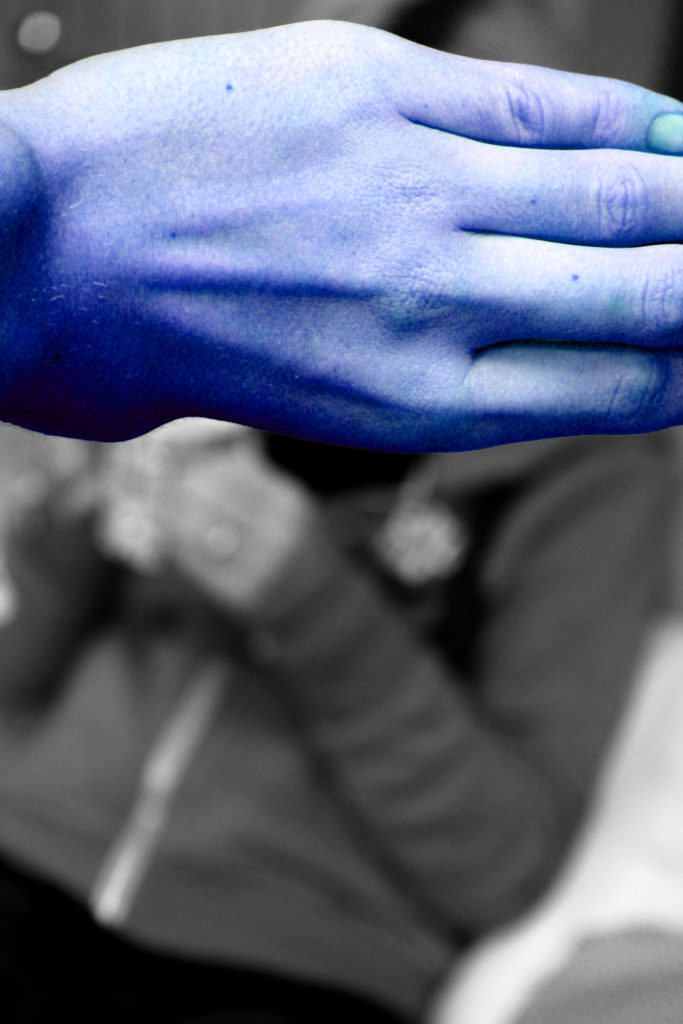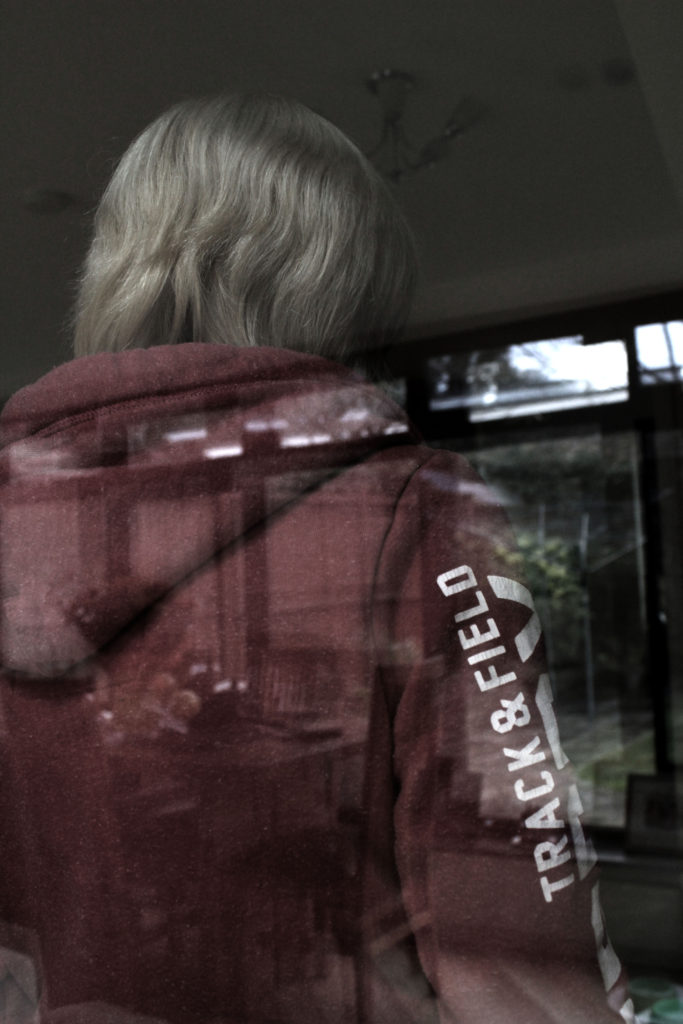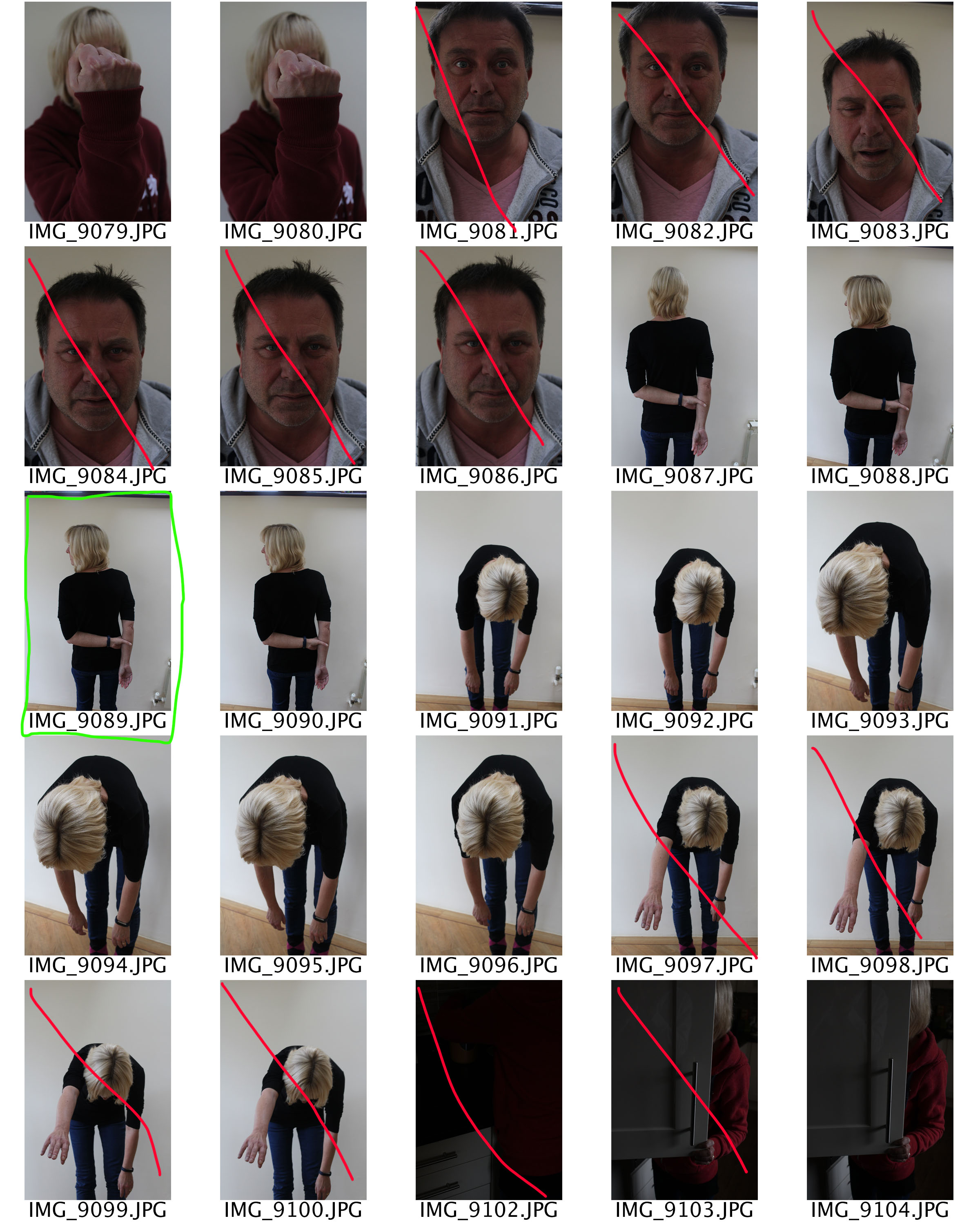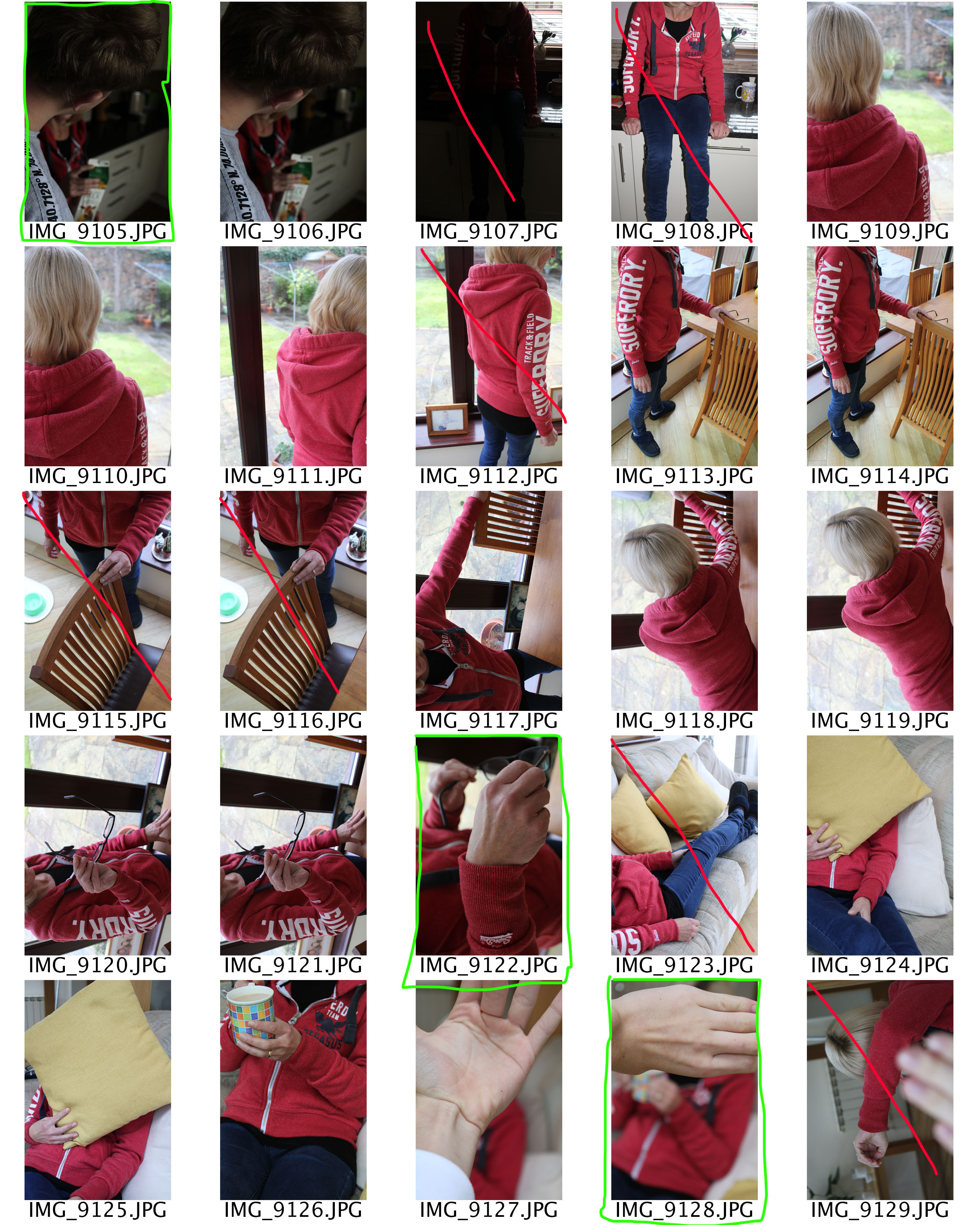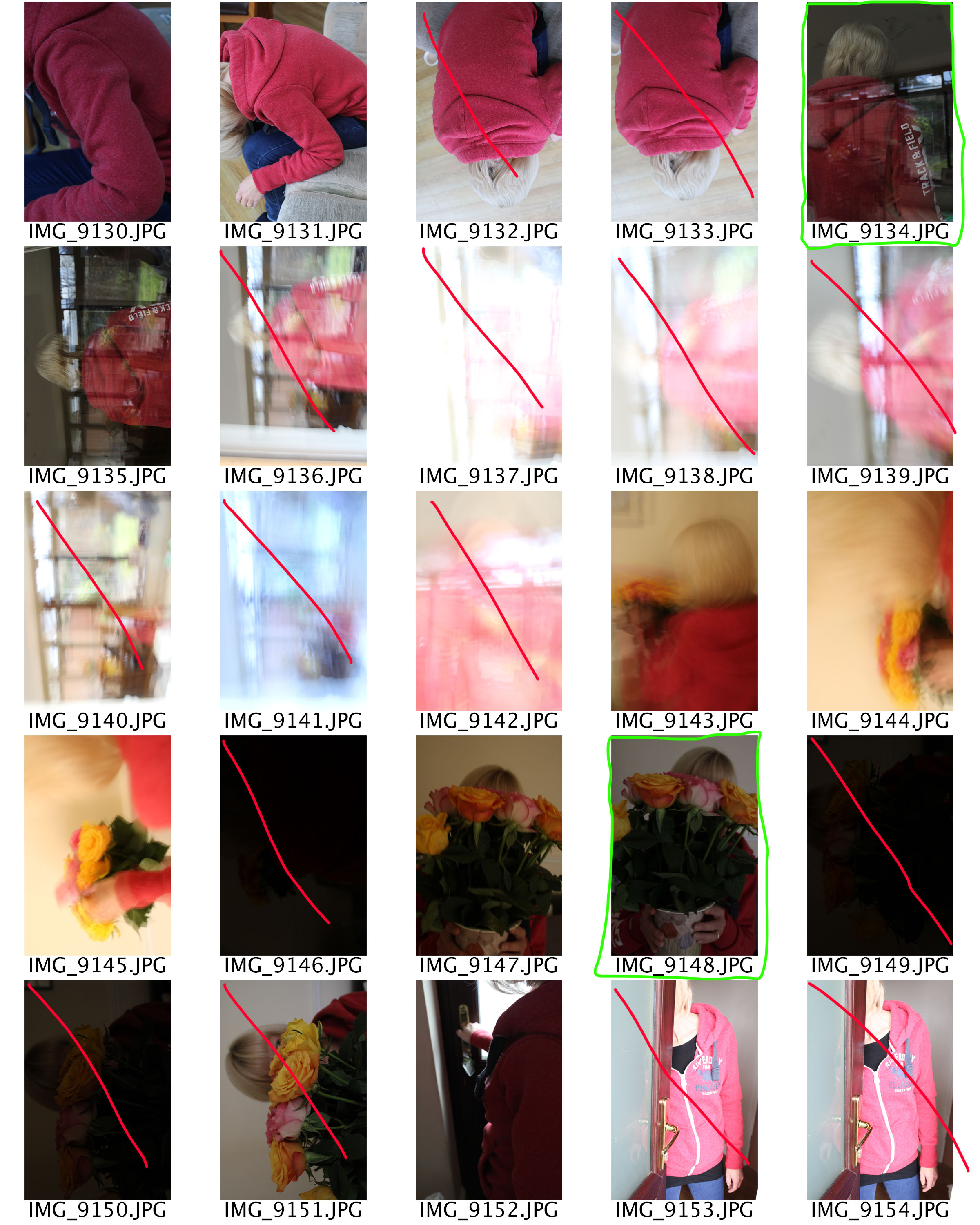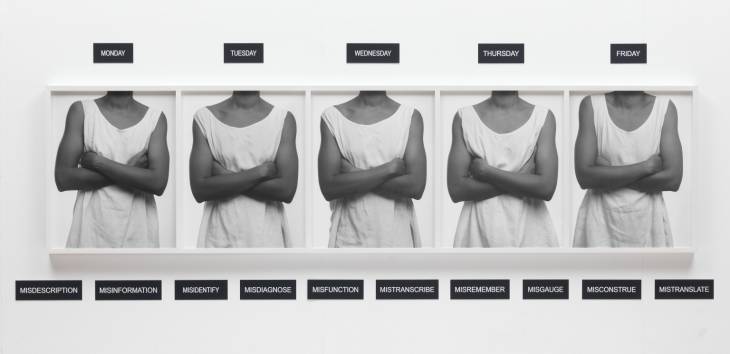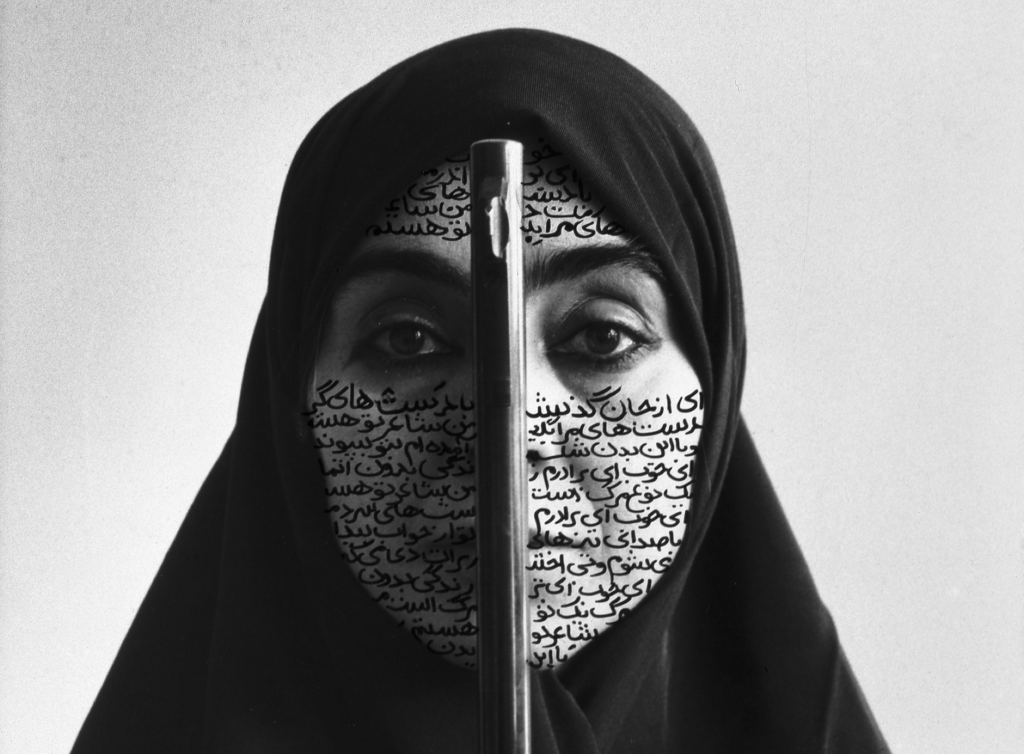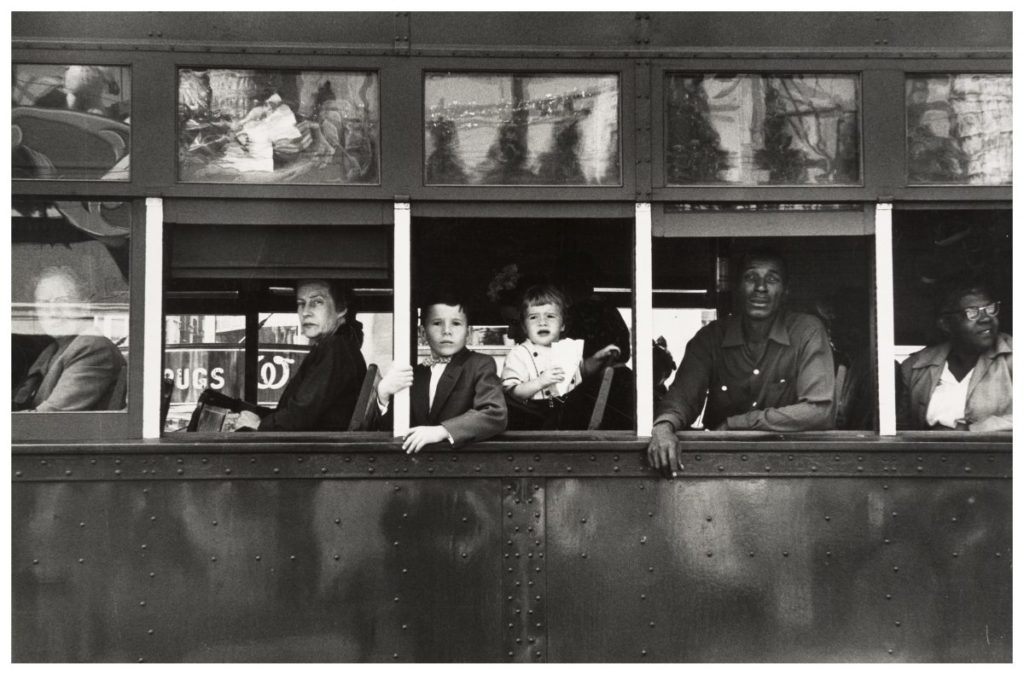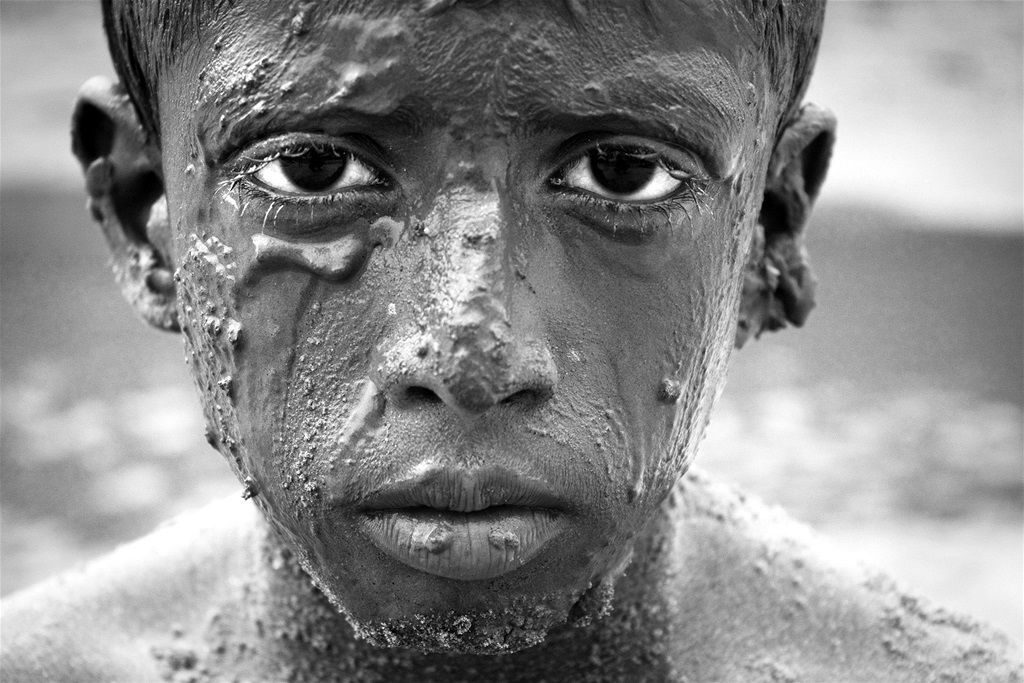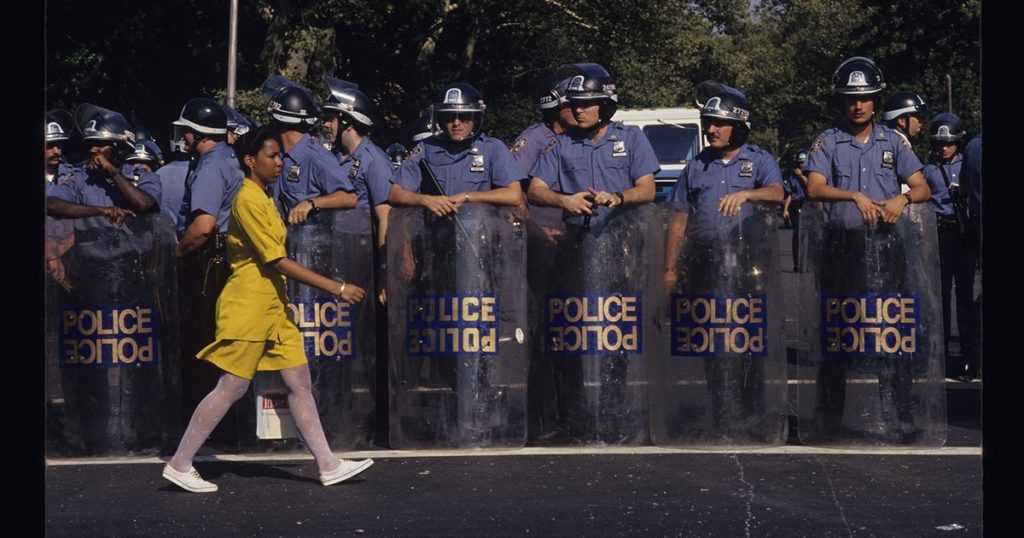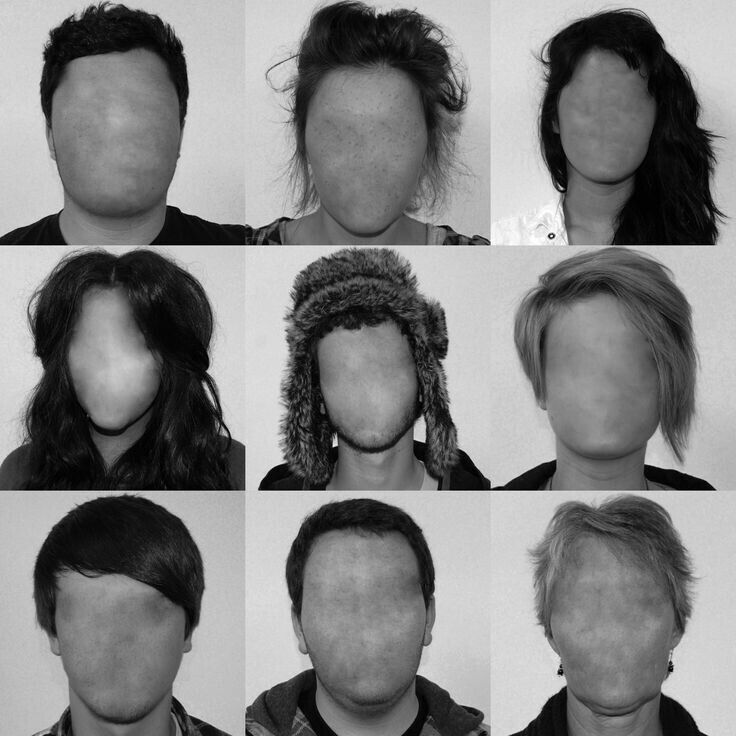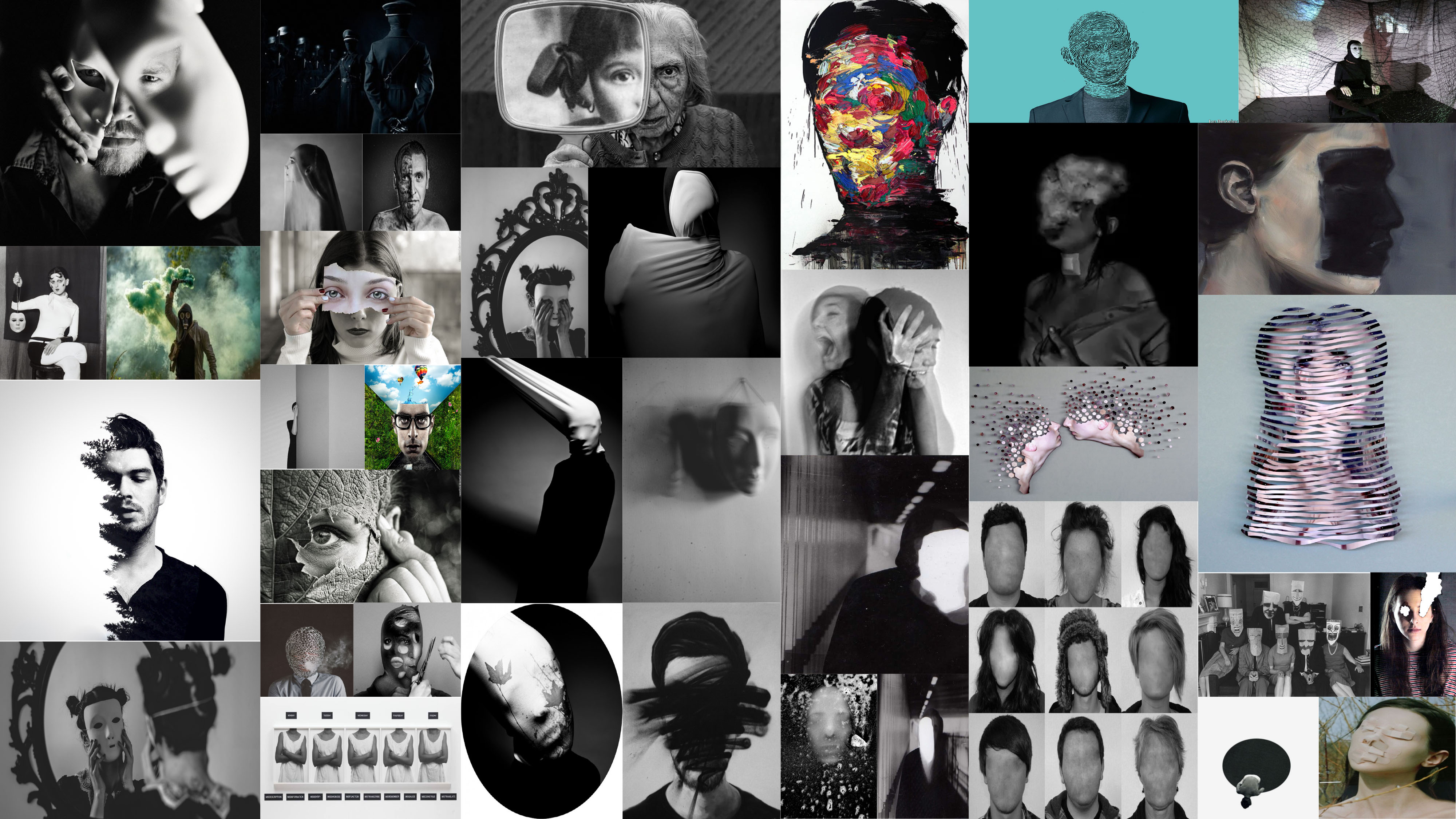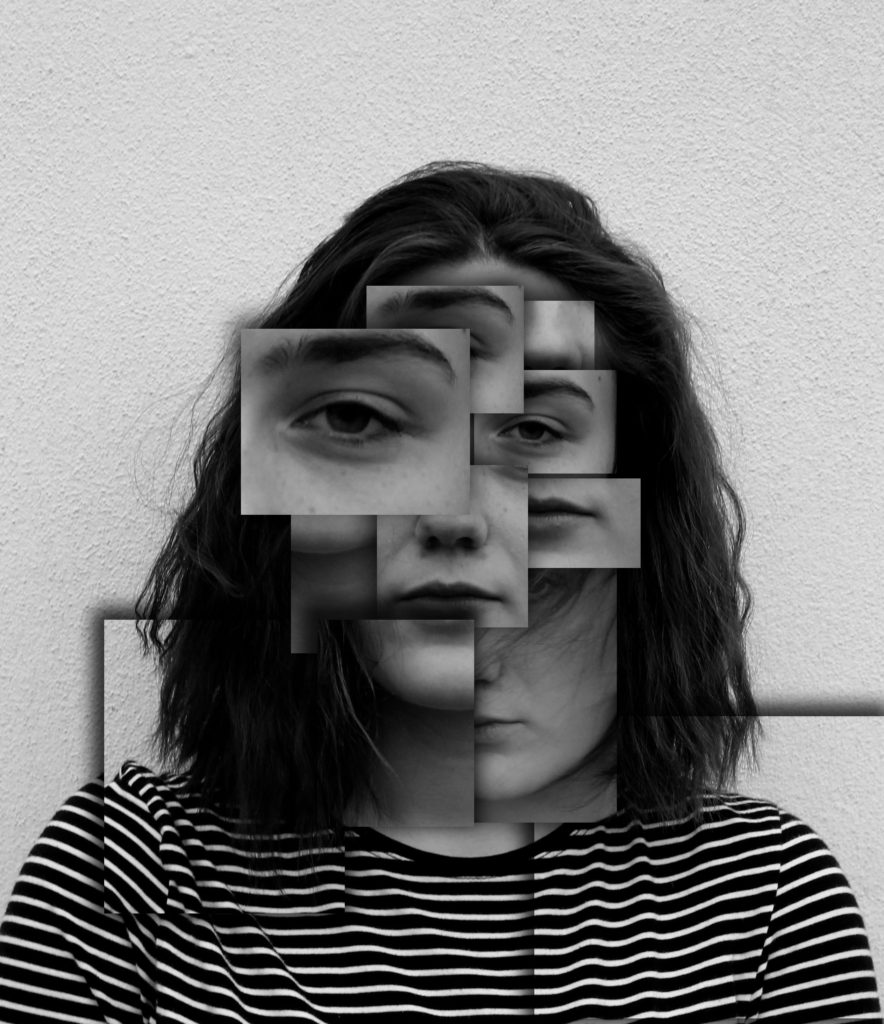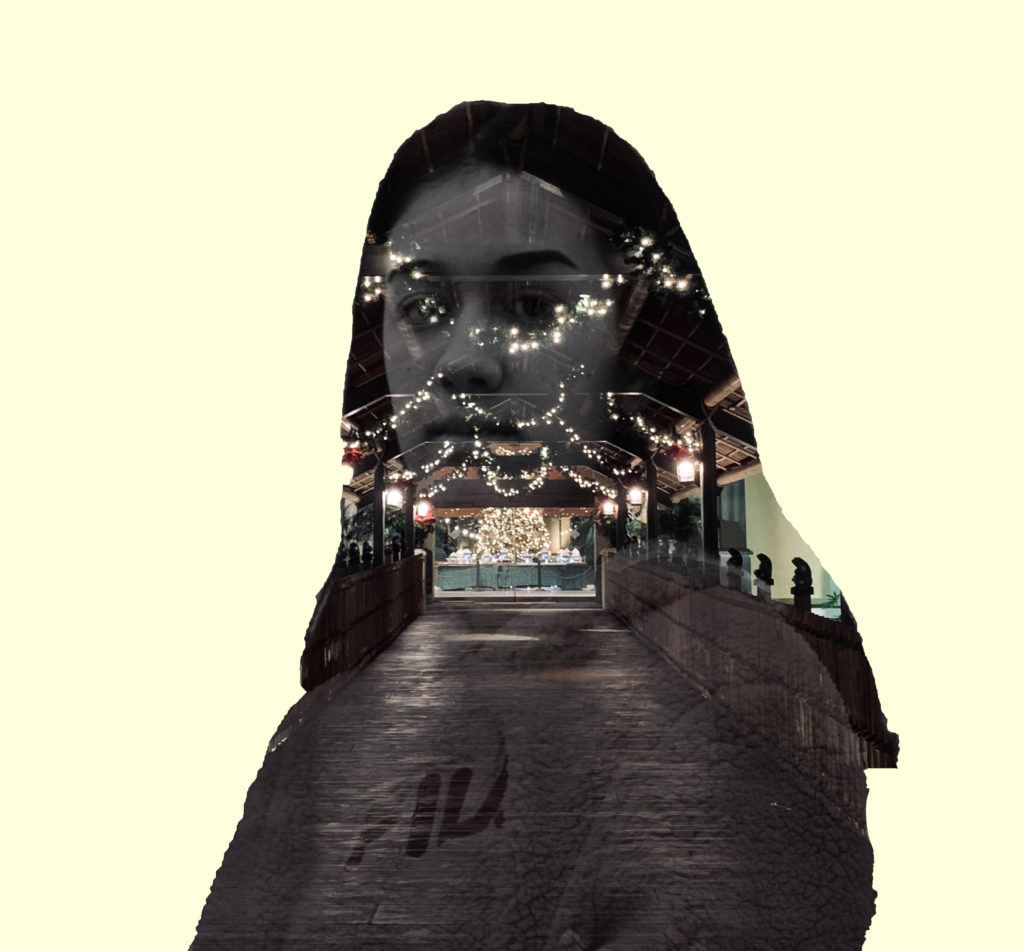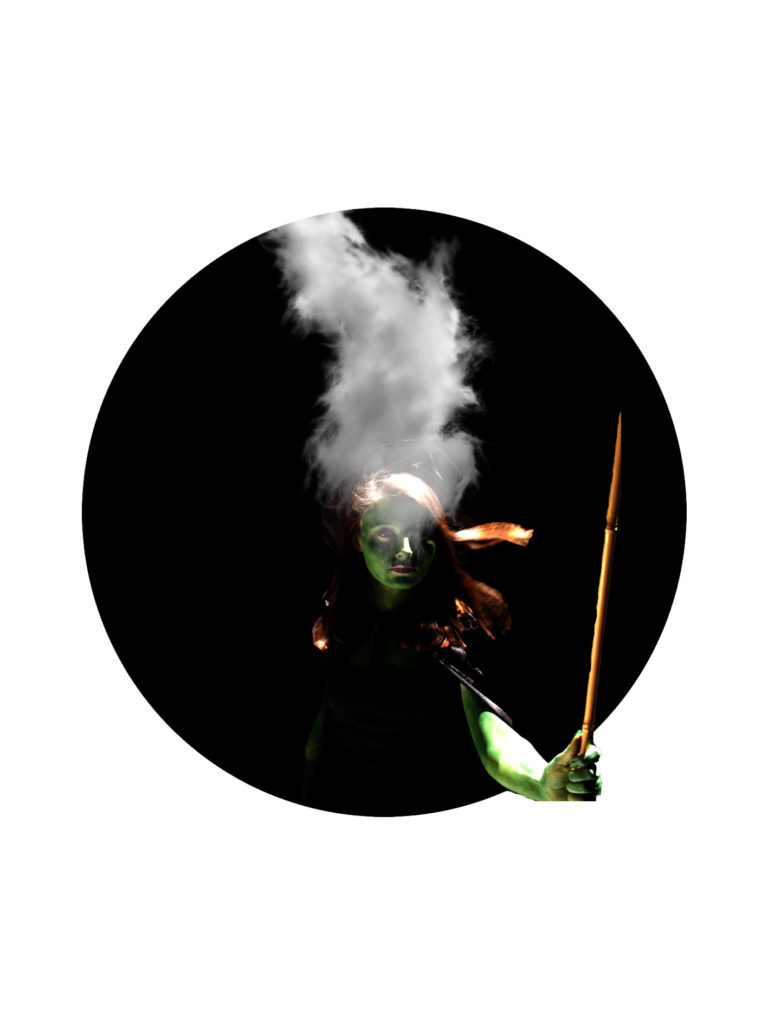I have gone through all of my photo shoots which have been conducted throughout the portrait project, and have selected the top outcomes from each shoot. The aim of this is to begin to make final selections of images which could lead to final pieces. Moreover, it is a chance for me to reflect and see what I have achieved throughout this project, and display my best outcomes as a collective. These images are initial thoughts of what could lead into final pieces, and is beginning to make me think about ways of displaying these images, and what message I am wanting to get across.
Response To Identity:
The images below are my top edits, which I believe have the strongest link to loss of identity. Moreover, all of the photographs clearly show good camera techniques and my ability to experiment, and use Photoshop in order to manipulate my images. These photographs have been taken from the two photo shoots and the old picture edit files, which I have produced in the past couple of weeks for the lead up of the mock exam.

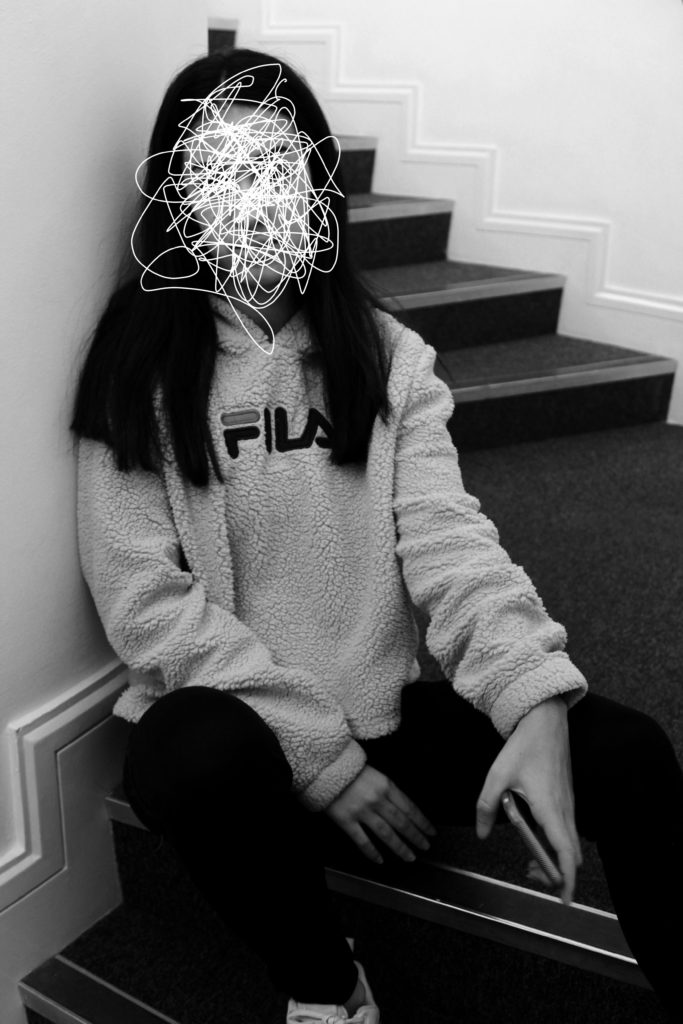
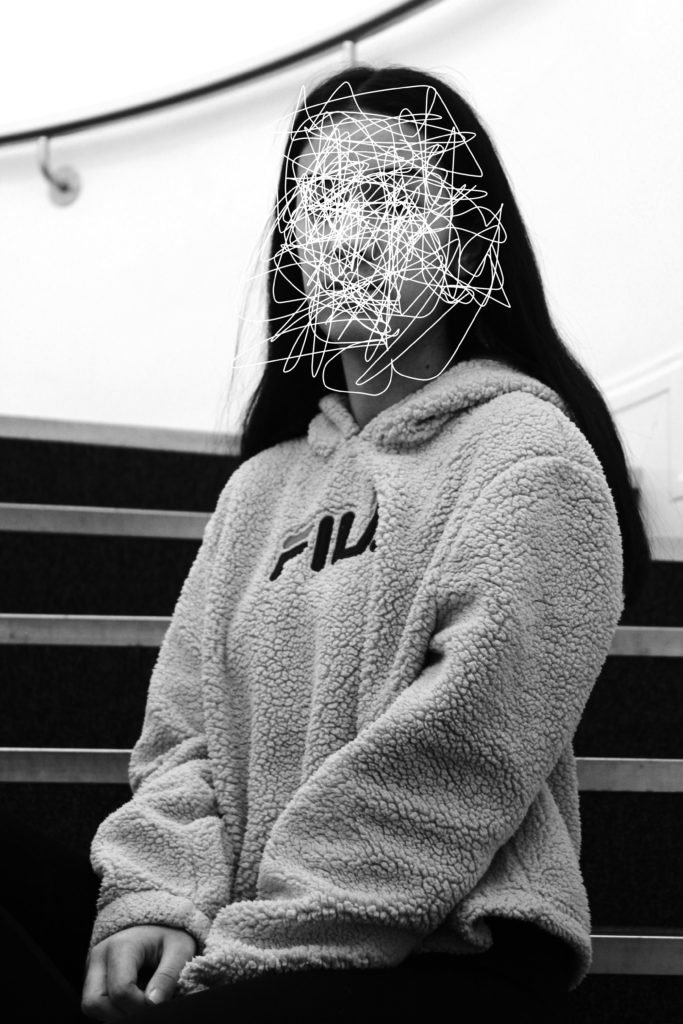
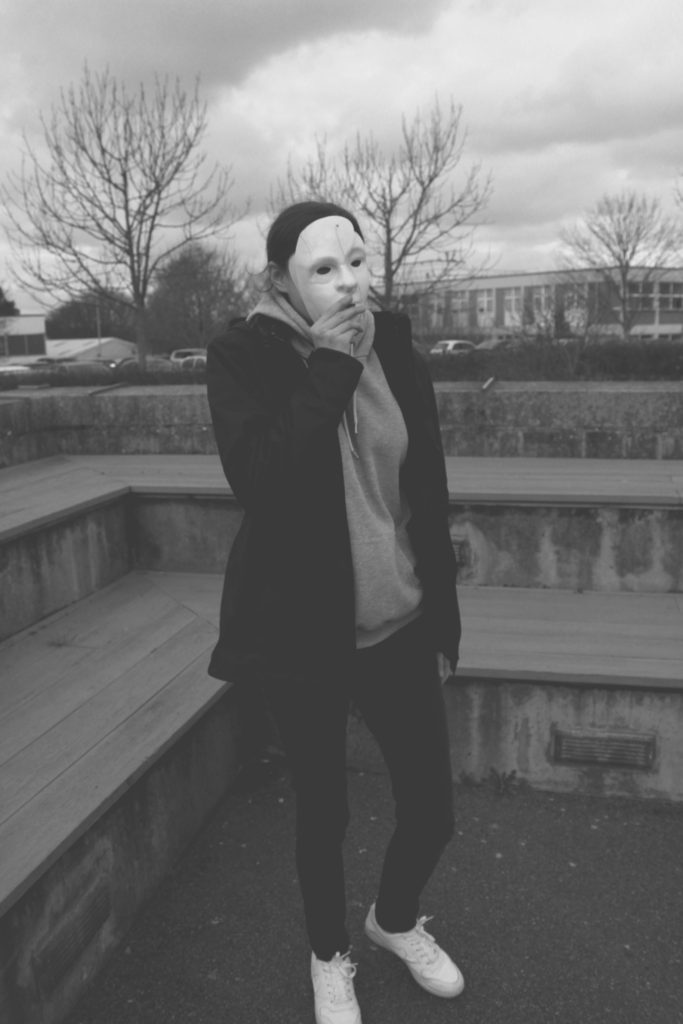
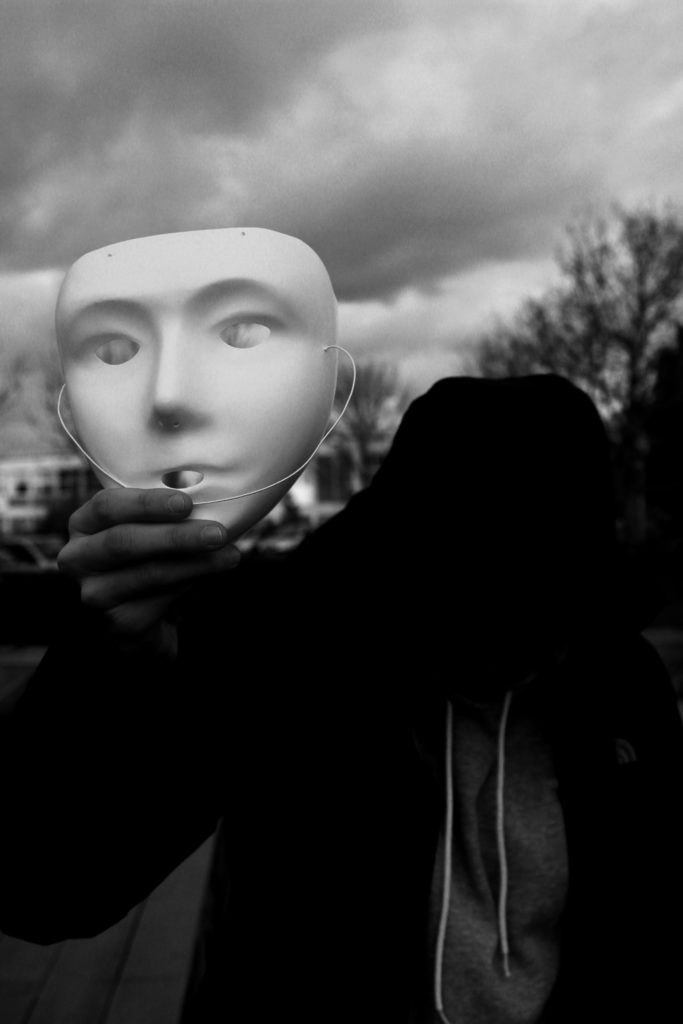

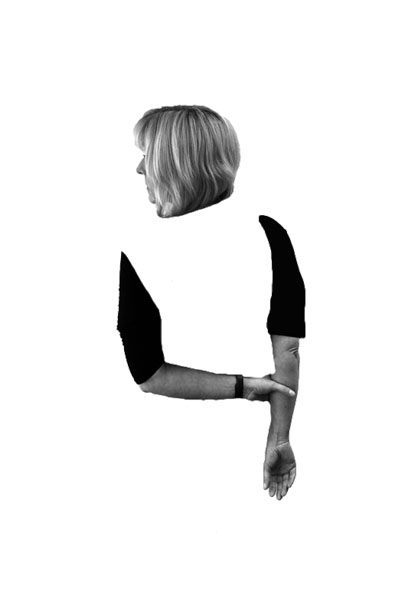
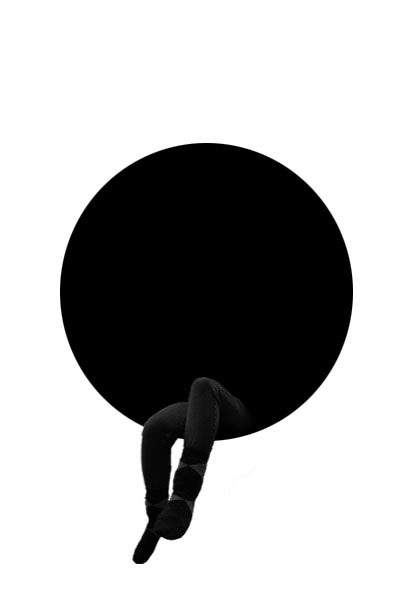
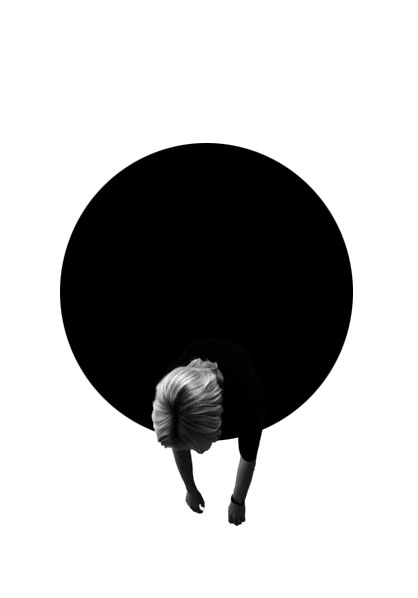
Response To Photo-Montage:
These are my top two photo-montages, which clearly show images being layered on top of each other to create an overall photograph. These two images showcase the inside of a person, by moving the head and placing objects in that and around that area, showcase the type of person they are. Both of the edits are showing the model to be smart, through the use of equations and elements off the periodic table.


Response To Tableaux:
I believe my tableaux photographs are the weakest images that I have produced from this project, as a result of this I have only one image which clearly showcases my approach to this style of photography. The image shows lighting and camera techniques, which help to build a story of what is happening within the photograph.

Response To Studio Lighting:
I had a large number of studio photography portraits, which I thought are successful. Due to having so many successful outcomes I am thinking of displaying 9 of the best outcomes, in rows with the middle image being in color. These are the nine best images which I would want to use, and think are the most successful.
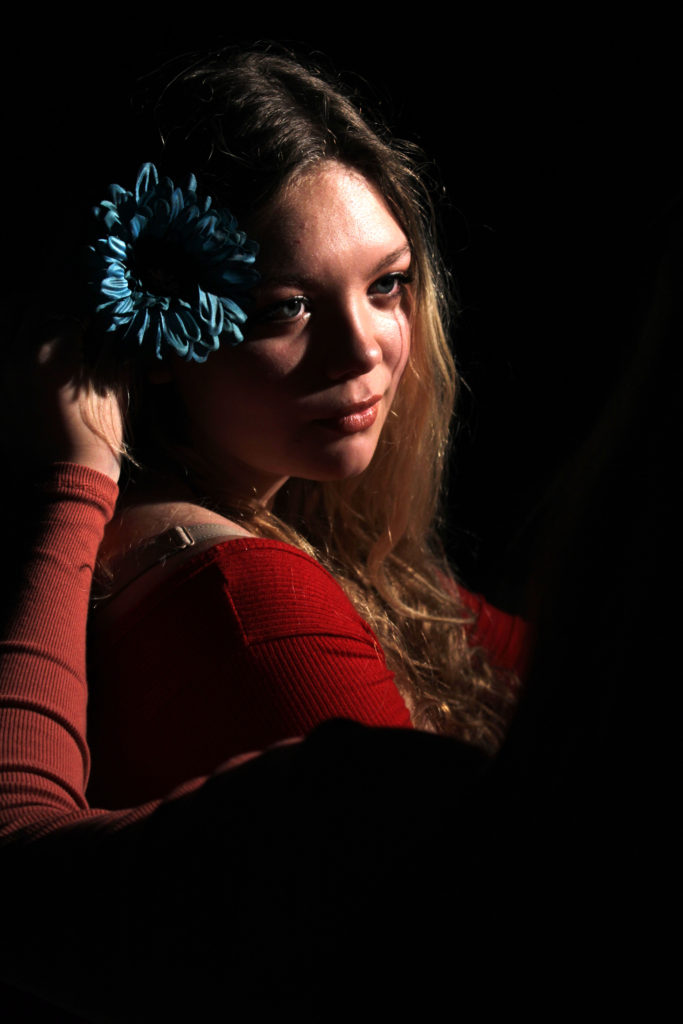
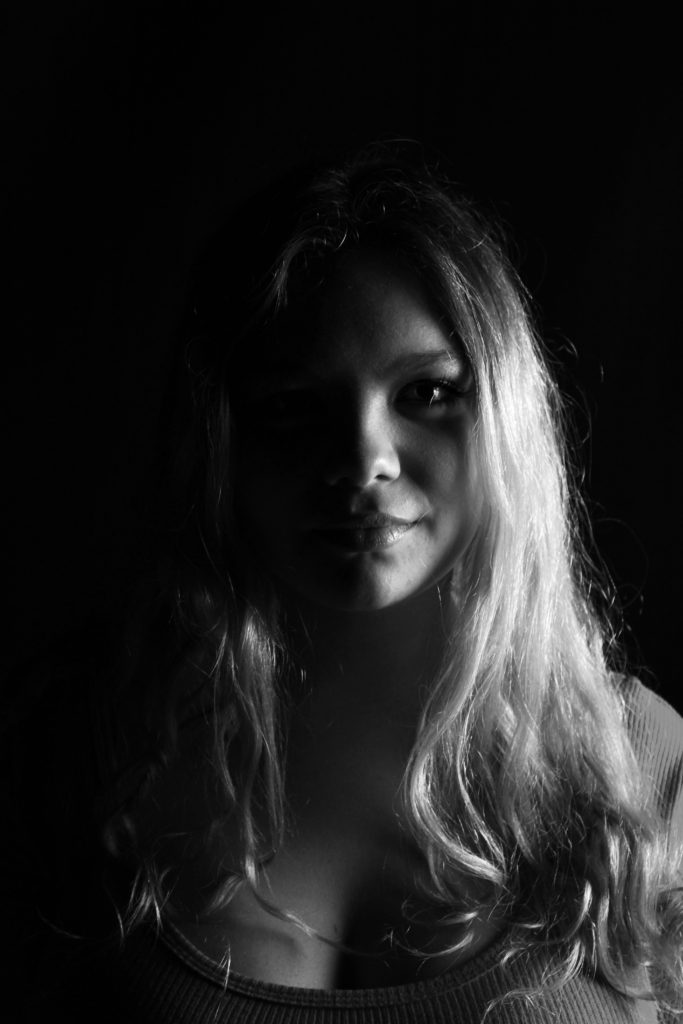
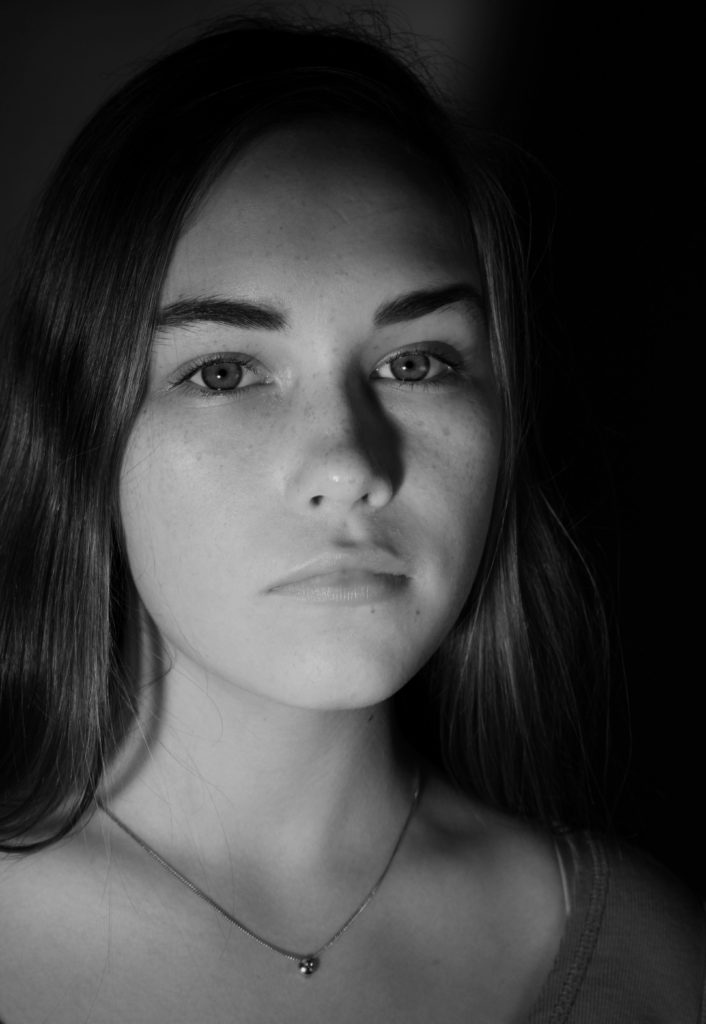
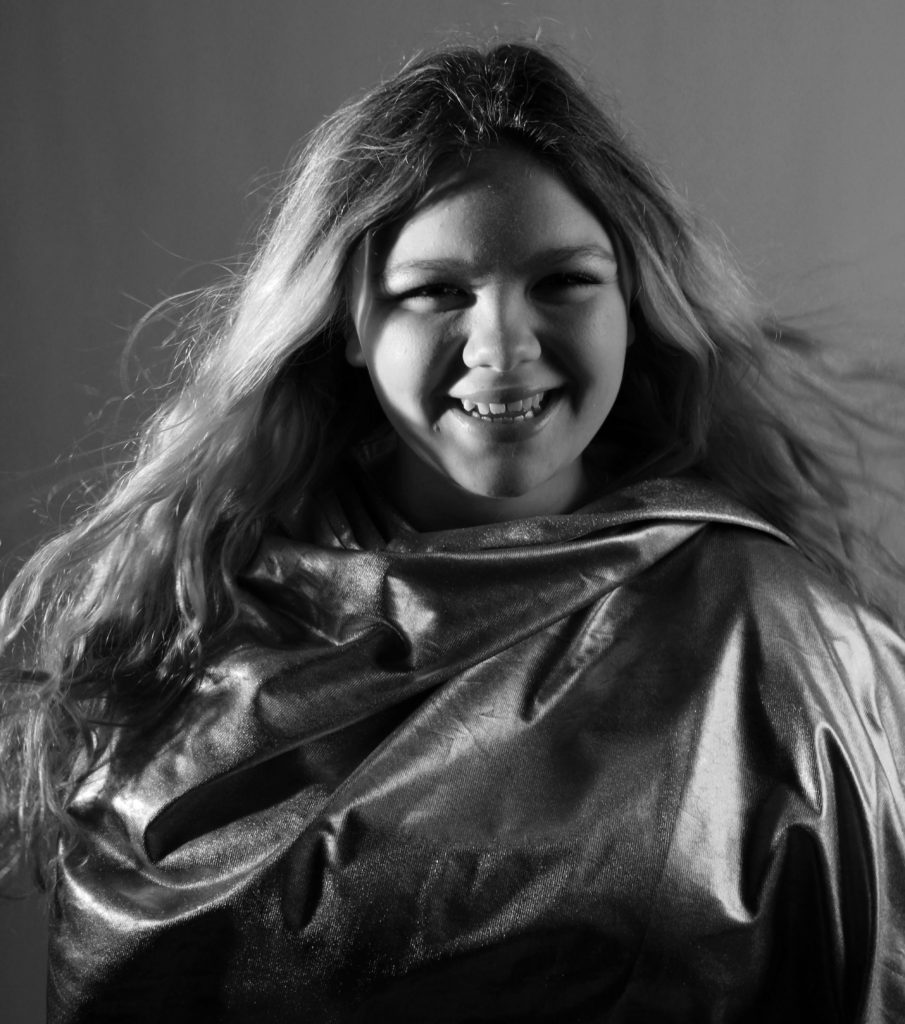
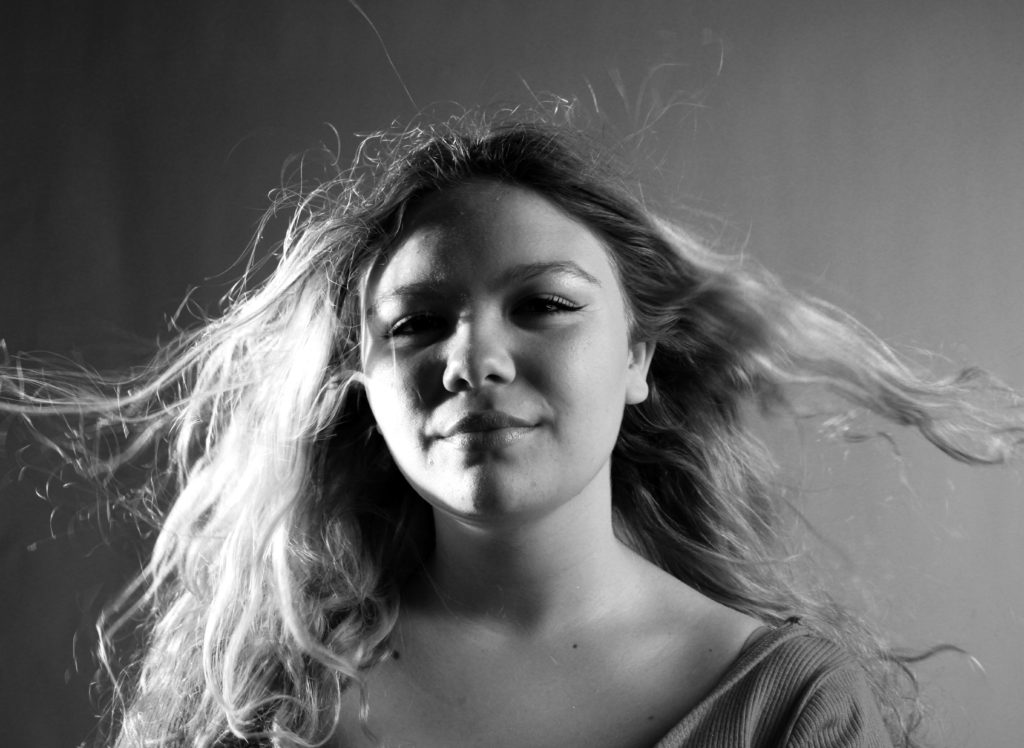
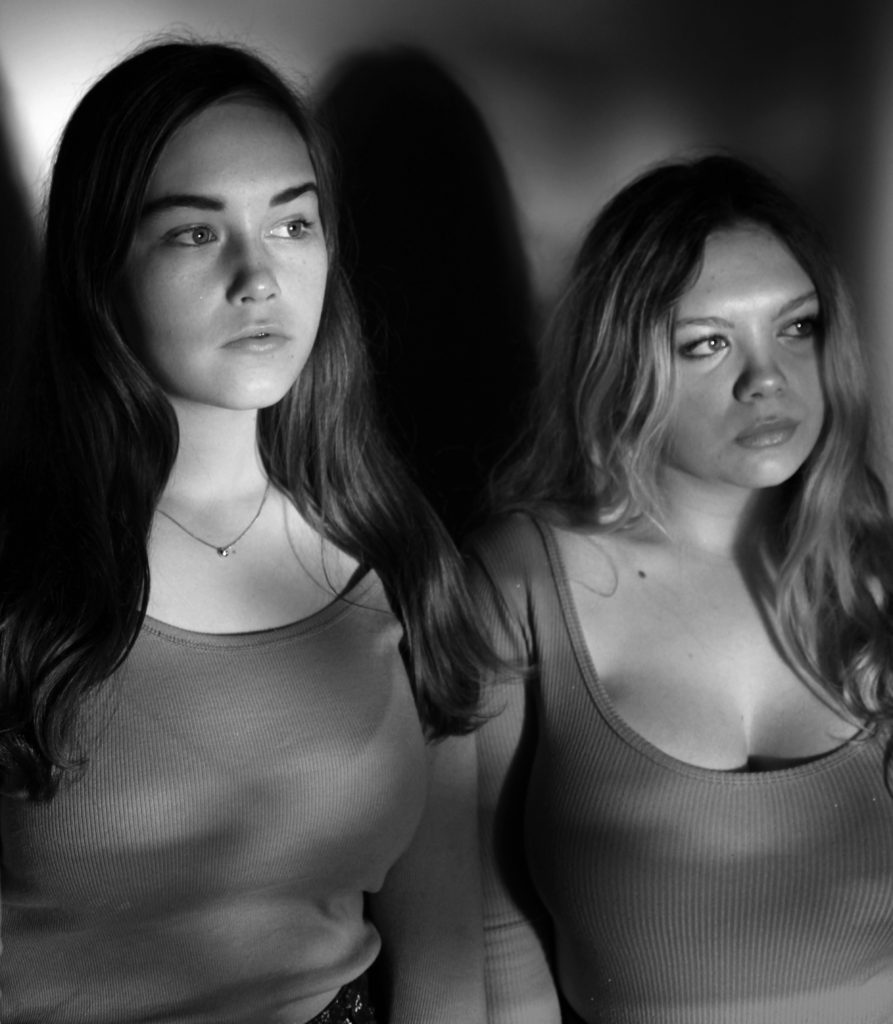

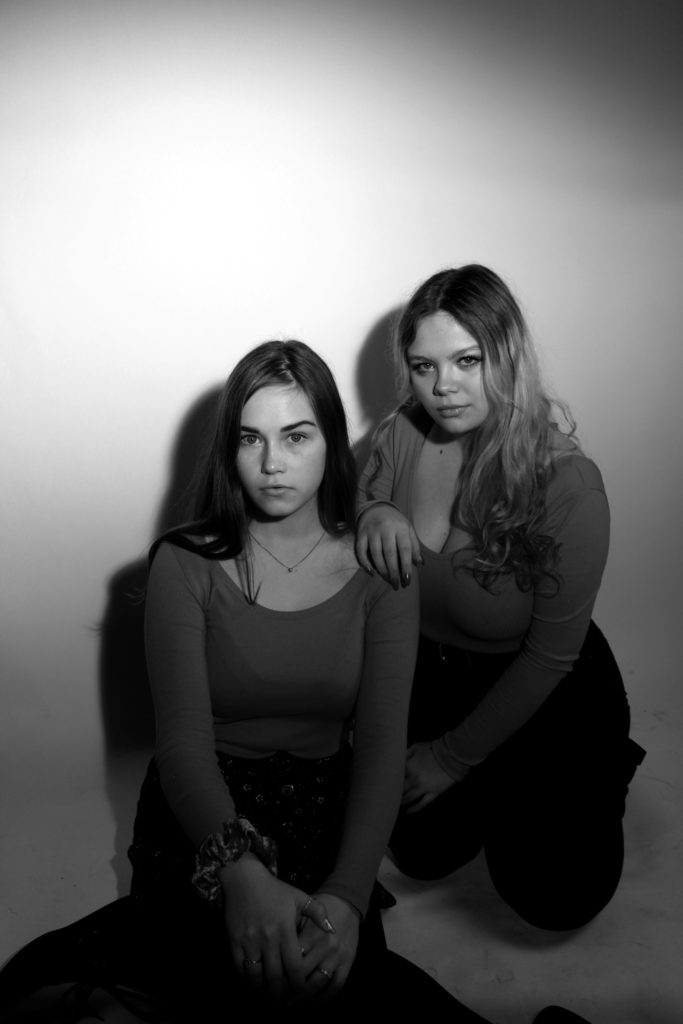
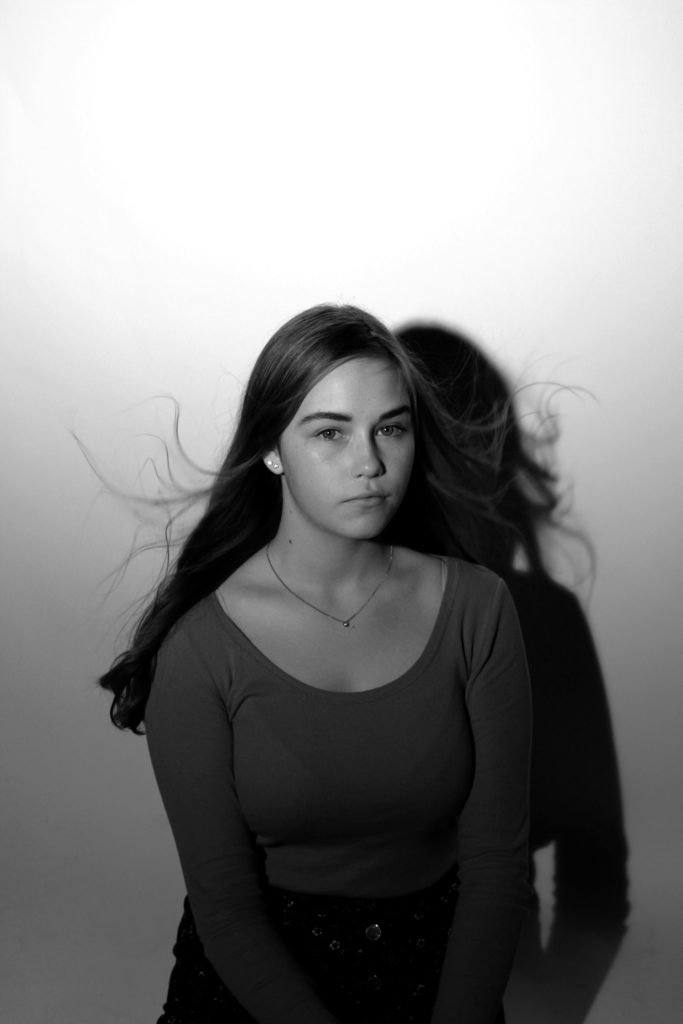
Response To Street Portraits:
Very much like the tableaux images, I felt that I was limited of successful images produced which therefore left me with three photographs which I believe could lead to potential final outcomes. These images clearly present the concept of street photography, through the nature of the model not being aware that I am capturing them in a photograph.
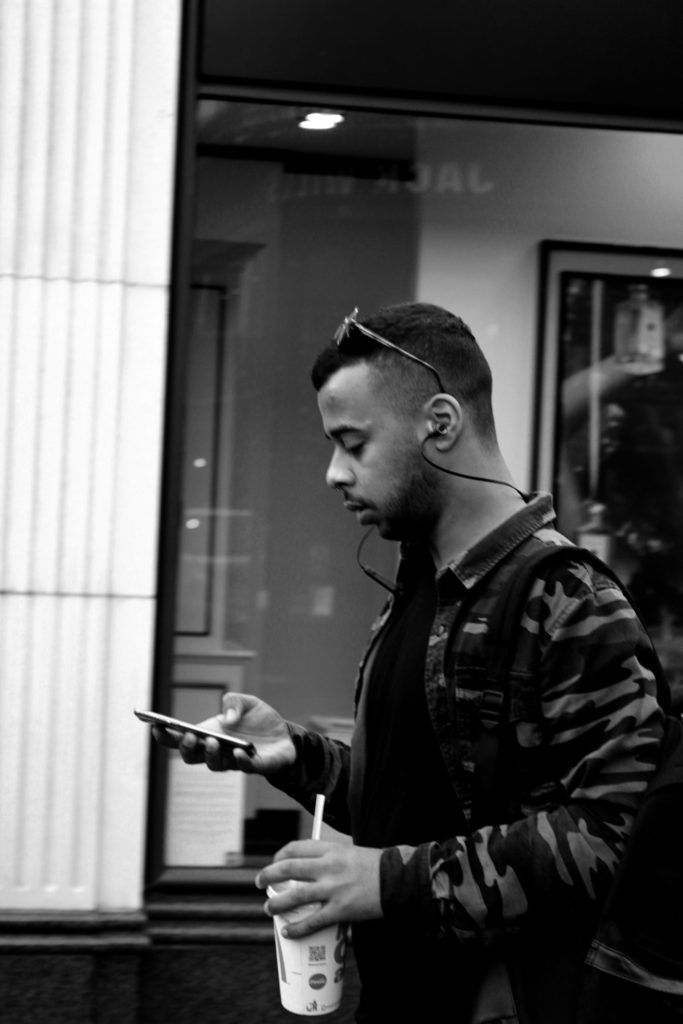
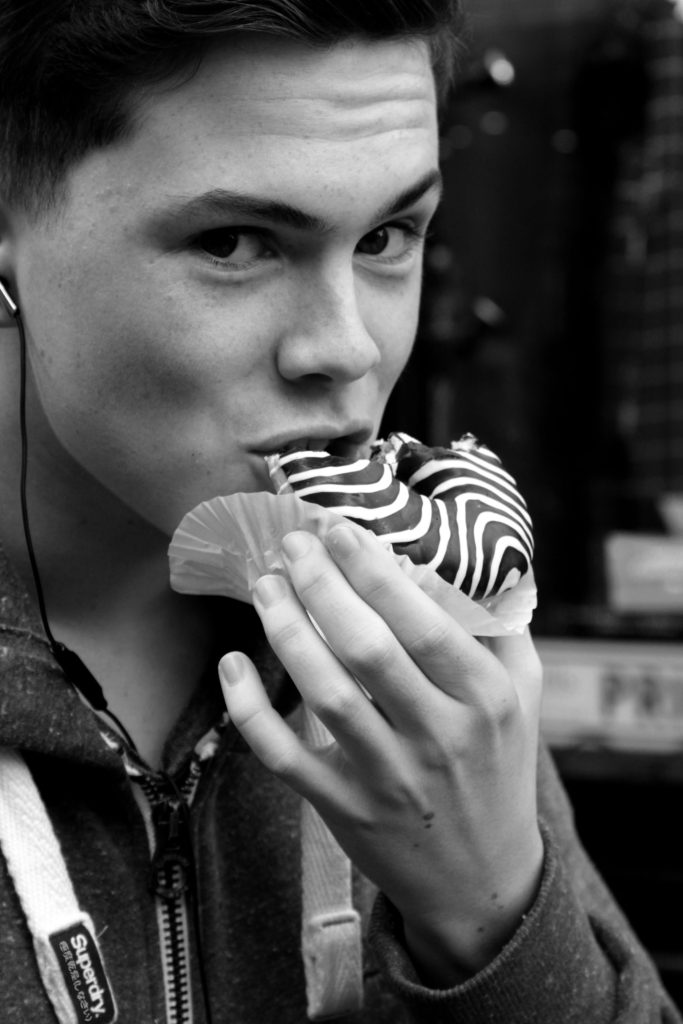
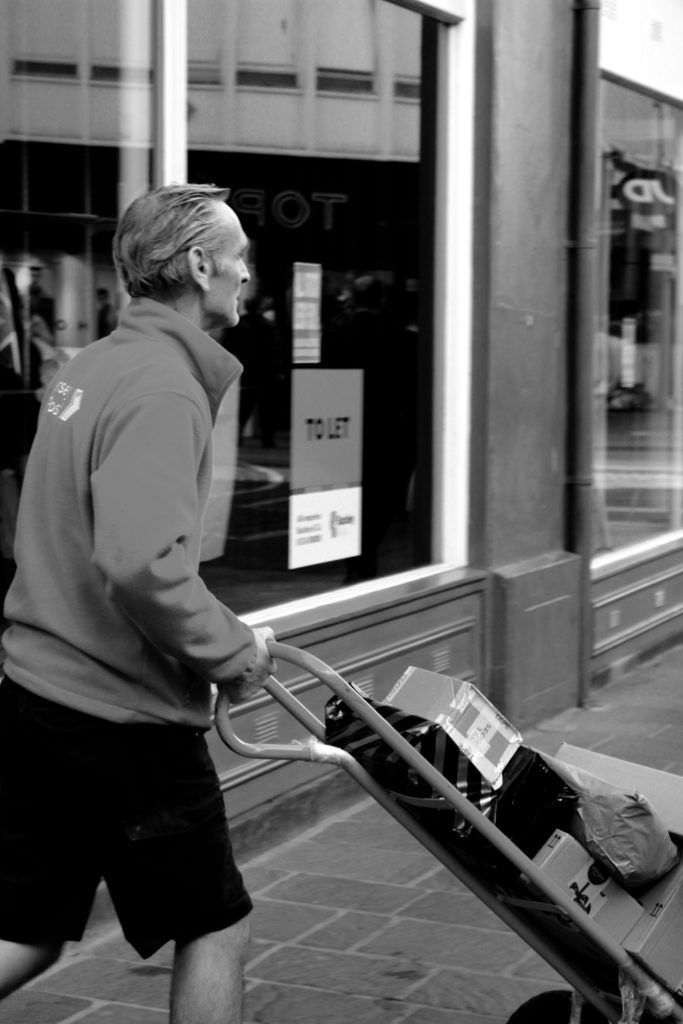
Response To Environmental Portraits:
I had a large selection of images which I could have used to showcase my response to environmental portraits. Due to the photo shoot I conducted showing the contrast of male and female stereotypes at retirement, I felt that it was appropriate to showcase two images, one of my male model and one of my female model. These two images, really outlined the contrast of gender roles I was trying to establish and therefore, I believe that they are my strongest outcomes in response to environmental portraits.

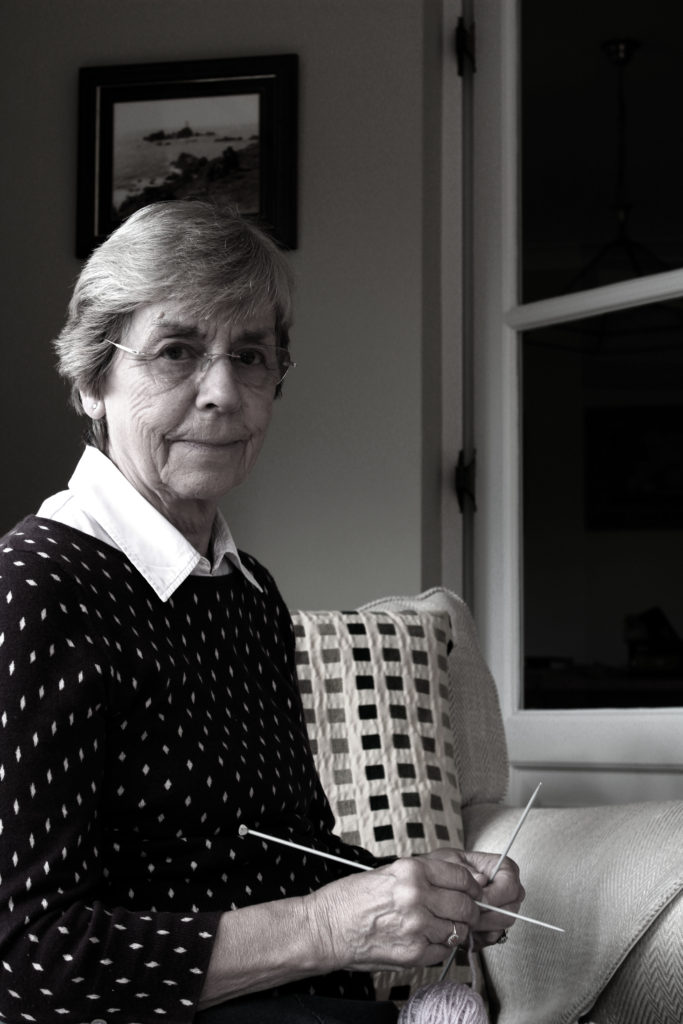

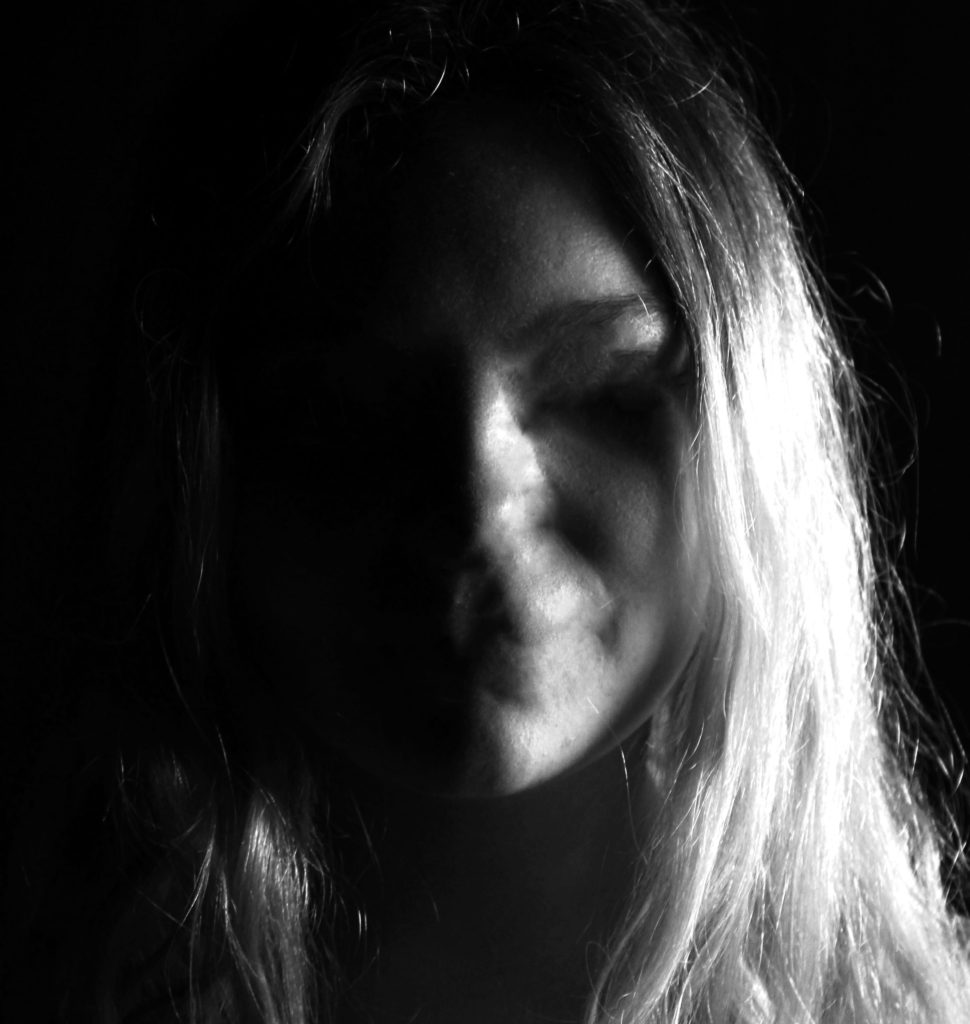

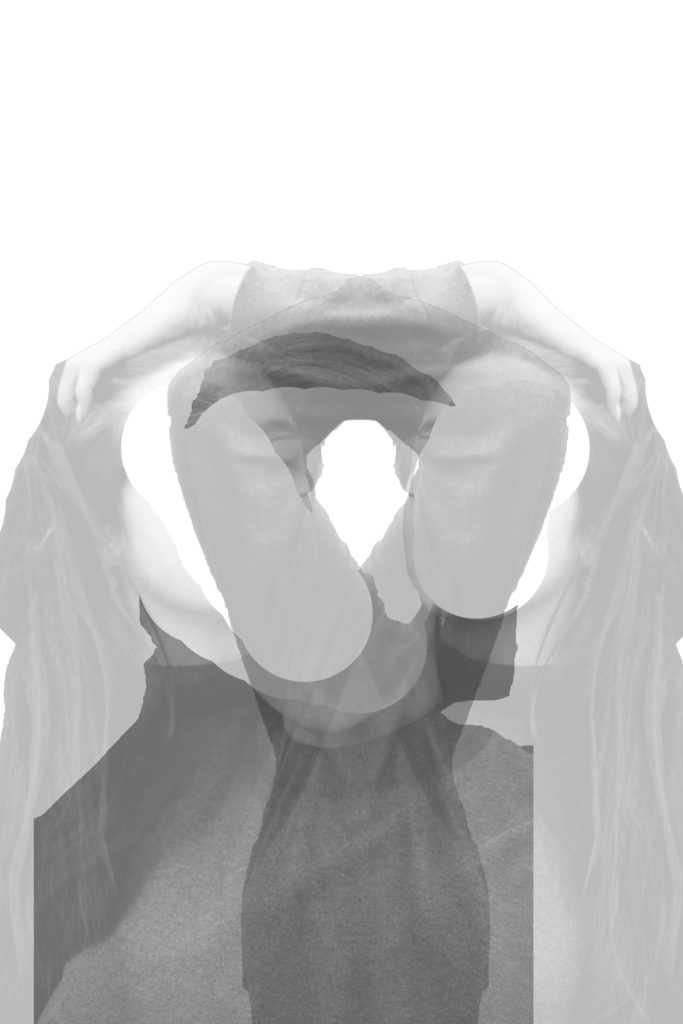 In this edit I wanted to look at the double exposure technique, where I would use two different images to formulate a whole image. I opened up the two images and cut the out using the quick selection tool and made them into separate layers by pressing layer via cut. I then moved these cut outs onto a new A4 white document. Using the rubber tool I decided to rub out the face, only leaving the body. I then placed the two images in the centre of the page and decreased the opacity of both, in order to see both images. I then decided to duplicate the layer with the model playing with her hair, and placed it the other side. Pressing ctrl + t allowed me to make the image face the other way. This final piece shows loss of identity as the models poses shows that she is confused, moreover the missing face suggested that she is lost. Finally the image is presented in black and white, making all aspects of colour identity being taken away.
In this edit I wanted to look at the double exposure technique, where I would use two different images to formulate a whole image. I opened up the two images and cut the out using the quick selection tool and made them into separate layers by pressing layer via cut. I then moved these cut outs onto a new A4 white document. Using the rubber tool I decided to rub out the face, only leaving the body. I then placed the two images in the centre of the page and decreased the opacity of both, in order to see both images. I then decided to duplicate the layer with the model playing with her hair, and placed it the other side. Pressing ctrl + t allowed me to make the image face the other way. This final piece shows loss of identity as the models poses shows that she is confused, moreover the missing face suggested that she is lost. Finally the image is presented in black and white, making all aspects of colour identity being taken away.